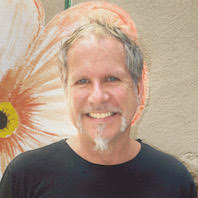A history of Guitar World: the good, the bad and the ridiculous
#GuitarWorld40: Former editor Brad Tolinski attempts to recall the ups and downs over 40 years of Guitar World
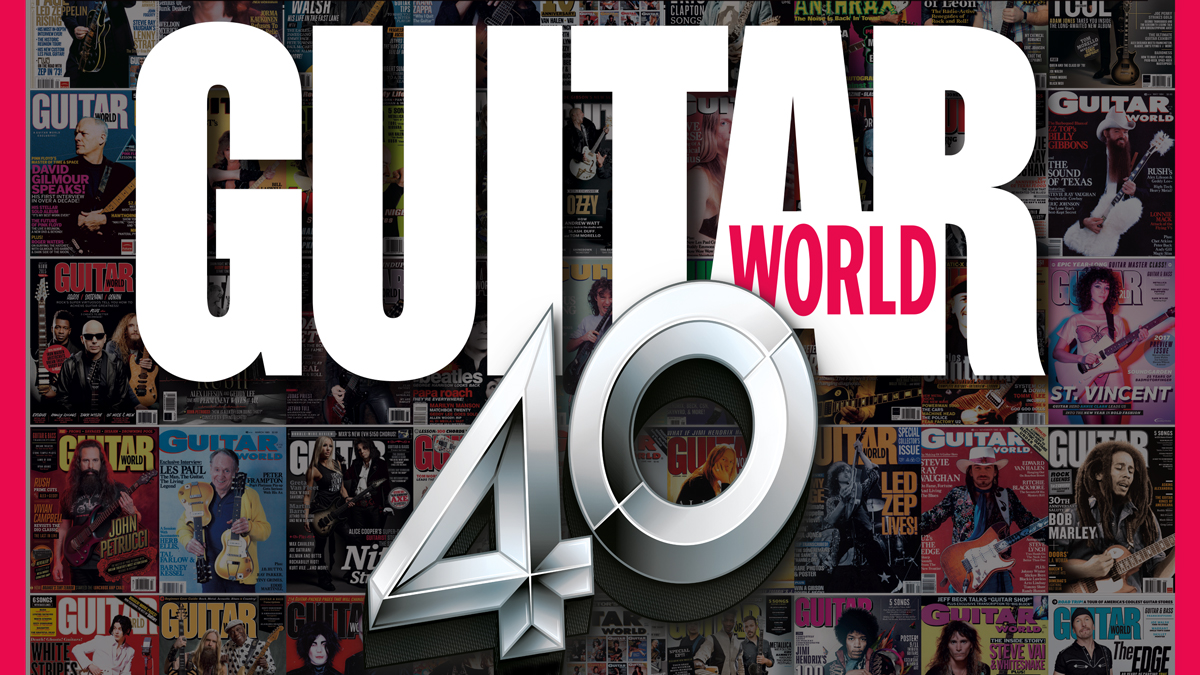
#GuitarWorld40: In 2020, Guitar World marks its 40th anniversary. To celebrate this momentous occasion, we’ll be sharing key moments from the magazine’s storied history, taking you inside the guitars, the stars and the bizarre from 40 years of the world’s biggest guitar magazine.
How do you sum up 40 years of the world’s greatest guitar magazine in roughly 3,000 words? You can’t. But having had the honor of serving as editor-in-chief of Guitar World for 25 of those years (1989 to 2015), I can tell you some of what I observed.
In many ways, there are two histories of Guitar World. There’s the publishing history – the dry facts one would read at Wikipedia – and the other is the personal story filled with hundreds of insane deadlines, drunkenness, hilarity, death and guitars.
Both are histories worth hearing, because you don’t have one without the other. Since I saw you perk up when I mentioned “drunkenness,” I’ll start there...
If you compared it to an amp, Guitar World’s first few issues were a sturdy 40-watt tweed combo, when what Harris really wanted was a row of 100-watt Marshalls
Without glamorizing alcohol too much, would it surprise anyone reading Guitar World that getting blitzed is a time-honored tradition among rock guitarists? I didn’t think so.
And while it is admittedly somewhat unprofessional to drink five, six or seven beers and have a couple of shots while conducting an interview, I would argue that without the assistance of Mr. Jack Daniels, it’s doubtful that Black Sabbath’s Tony Iommi would’ve told me about the time he lit drummer Bill Ward’s beard on fire, sending him screaming to an emergency room.
“He went up like a Christmas tree!” I believe were Iommi’s exact words. The legendary Sabbath guitarist told dozens of wild stories that evening, some that were completely unprintable and at least one that almost got us sued (I’ll save that for another time).
All the latest guitar news, interviews, lessons, reviews, deals and more, direct to your inbox!
But we had a great evening, and as a result, he gave me a terrific interview and agreed to do several columns for Guitar World, allowing our readers months of unprecedented access to his greatest playing secrets. Sure, the process of getting the heavy metal maestro to write the columns was unorthodox, but, as we shall see, Guitar World was never a run-of-the-mill publication.
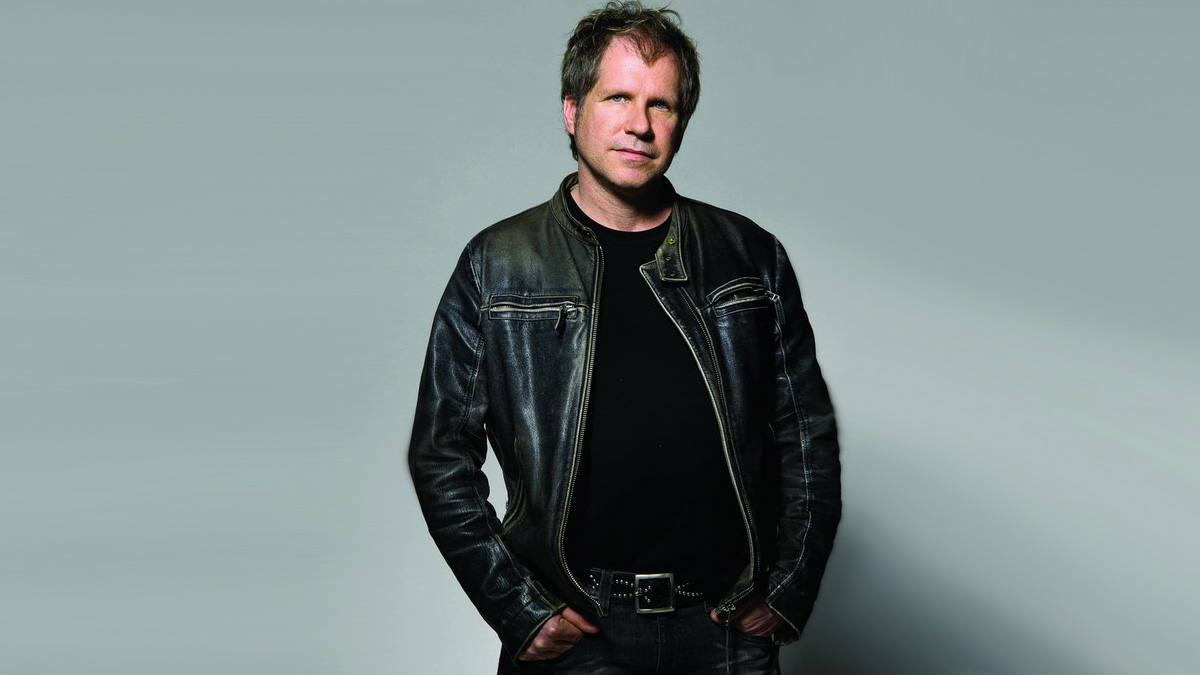
In the Beginning
I wasn't around for the first decade of Guitar World, but I know the story well. In 1980, Stanley Harris, a successful and canny New York publisher who specialized in magazines about hair care and guns (and circle-the-word puzzle books), decided to launch a guitar publication.
The California-based Guitar Player magazine already existed and was successful, but it was a bit academic, to say the least. Harris was no headbanger, but he could see that Guitar Player was ignoring the needs of a gigantic segment of the guitar marketplace – rockers with big hair, tight jeans and pointy guitars. So, in July 1980 Harris launched Guitar World.
The cover featured high-octane bluesman Johnny Winter, and also included pieces on the Allman Brothers and George Thorogood, who’d hit the big time with revved-up covers of songs like Bo Diddley’s Who Do You Love and Hank Williams’ Move It on Over.
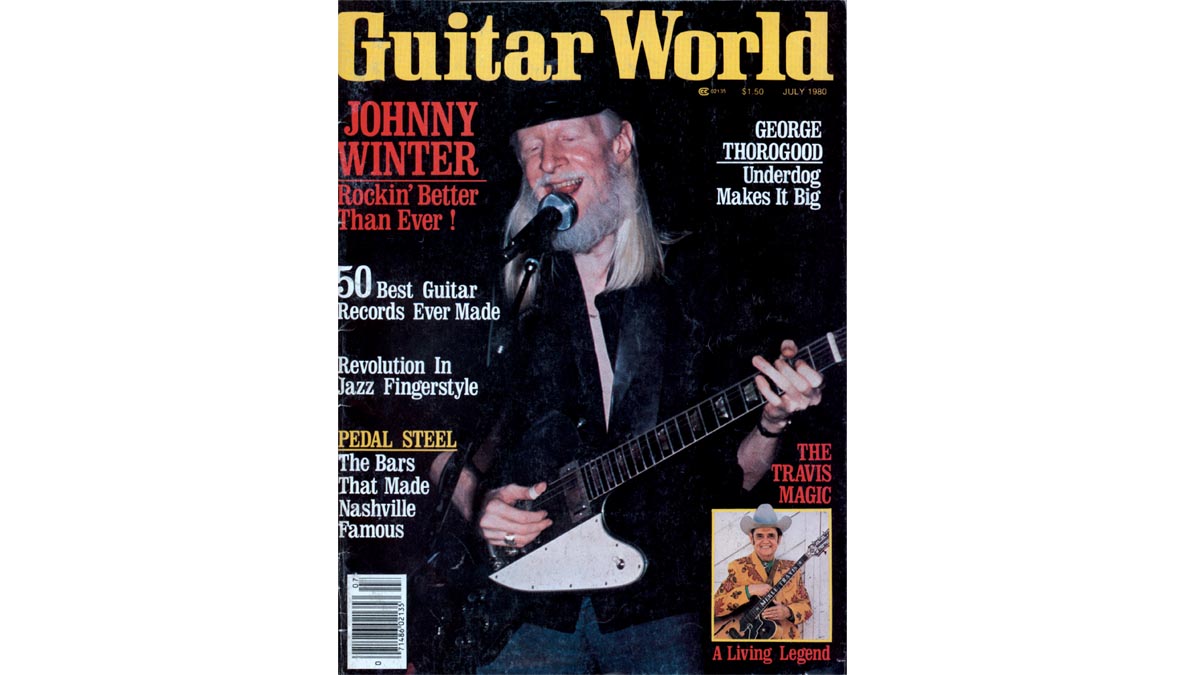
It was a decent start, but the design and editorial content was still a little lackluster. If you compared it to an amp, Guitar World’s first few issues were a sturdy 40-watt tweed combo, when what Harris really wanted was a row of 100-watt Marshalls.
“Guitar World sold well from the get-go, but I knew what we really needed was an even hipper rock alternative to what was already out there,” recalled Dennis Page, an advertising rep enlisted to handle the business end of the new guitar magazine. “I knew I needed to get involved with this freakin’ book.”
The issue that put the new magazine on the map was May 1982 – Randy Rhoads’ first appearance
Page shook things up by hiring a new editor-in-chief, Noe Goldwasser, who he described as “a hippie quasi-rock writer dude.” Noe might’ve been a hippie, but he had his ear to the metal underground, printing the first of many cover stories with Edward Van Halen.
He also brought with him a solid pool of editorial talent like John Swenson, Steven Rosen, Gene Santoro and unabashed Yngwie J. Malmsteen supporter Joe Lalaina. Two years later, Guitar World was hummin’ like a single-coil pickup, featuring huge stars like Alex Lifeson, Steve Howe and Frank Zappa.
But the issue that put the new magazine on the map was May 1982 – Randy Rhoads’ first appearance – which happened to be on the newsstands shortly after the young Ozzy Osbourne virtuoso died in a tragic plane crash on March 19.
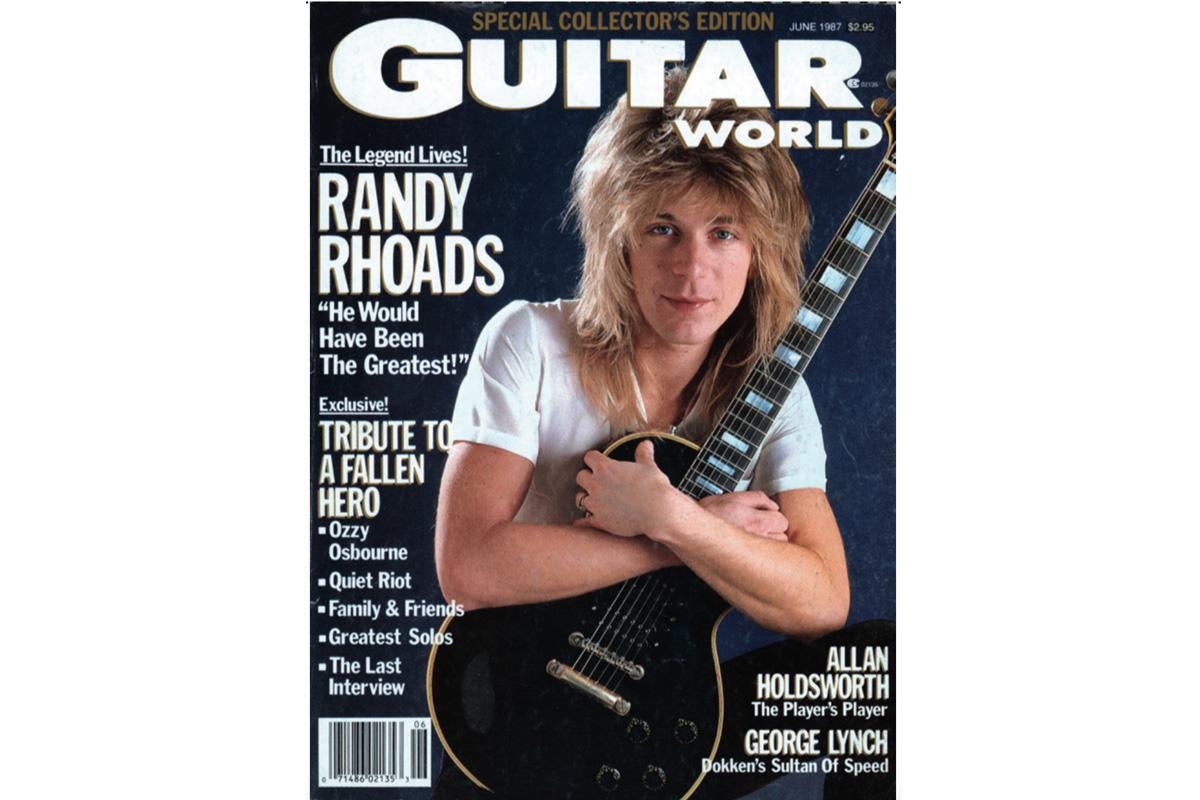
Goldwasser edited several other landmark issues in that first decade, including Guitar World’s fifth anniversary issue in 1985, which featured an unprecedented cover-to-cover celebration of Jimi Hendrix; and a July 1986 tribute to Led Zeppelin’s Jimmy Page, featuring a 15-page interview with the reclusive legend, along with early note-for-note transcriptions of Page solos to classics like “Stairway to Heaven” and “Rock and Roll.”
Yes, Guitar World had risen to the top of the guitar-magazine heap, but there were storm clouds on the horizon. In 1988, Goldwasser began having creative differences with publisher Dennis Page.
“We had several problems,” recalled Page. “But the most important one was that we were being seriously challenged by the arrival on the scene of a new magazine called Guitar for the Practicing Musician, which cut into our readership, because they had song transcriptions in every issue of their magazine. I thought we should follow suit, but Noe resisted.”
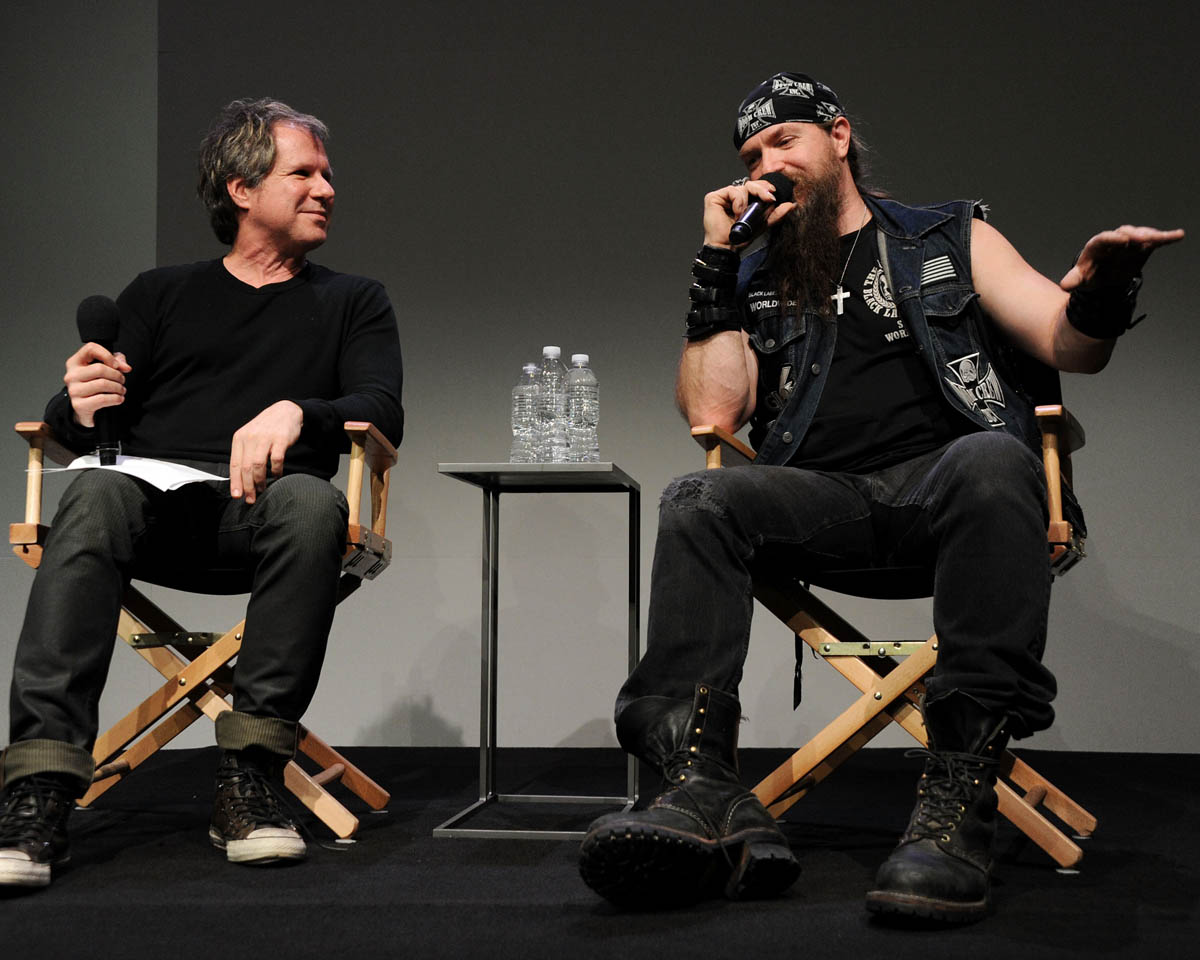
The Golden Age
It was during that uncomfortable moment in Guitar World history that I unwittingly sashayed through the door. I had moved to New York from Taylor, Michigan in the mid-Nineties and was struggling to make ends meet.
I played in bands and worked for minimum wage at We Buy Guitars, a used-guitar shop on Manhattan’s legendary “music row” on 48th Street, across from Manny’s, where people like Jimi Hendrix, Paul McCartney and Ace Frehley came to buy guitars.
It was a cool job and I was having the time of my life, but I was almost always broke and starving, weighing a scrawny 135 pounds when I should’ve been at least 150. Desperate, it was during that period that I discovered I could actually make money selling words to magazines like Music, Computers and Software, Keyboard World and… Guitar World.
Writing for Guitar World saved me. It was a place I could make more money scribbling down a story about guitarists like Vito Bratta or George Lynch, than I often made in a month working at We Buy.
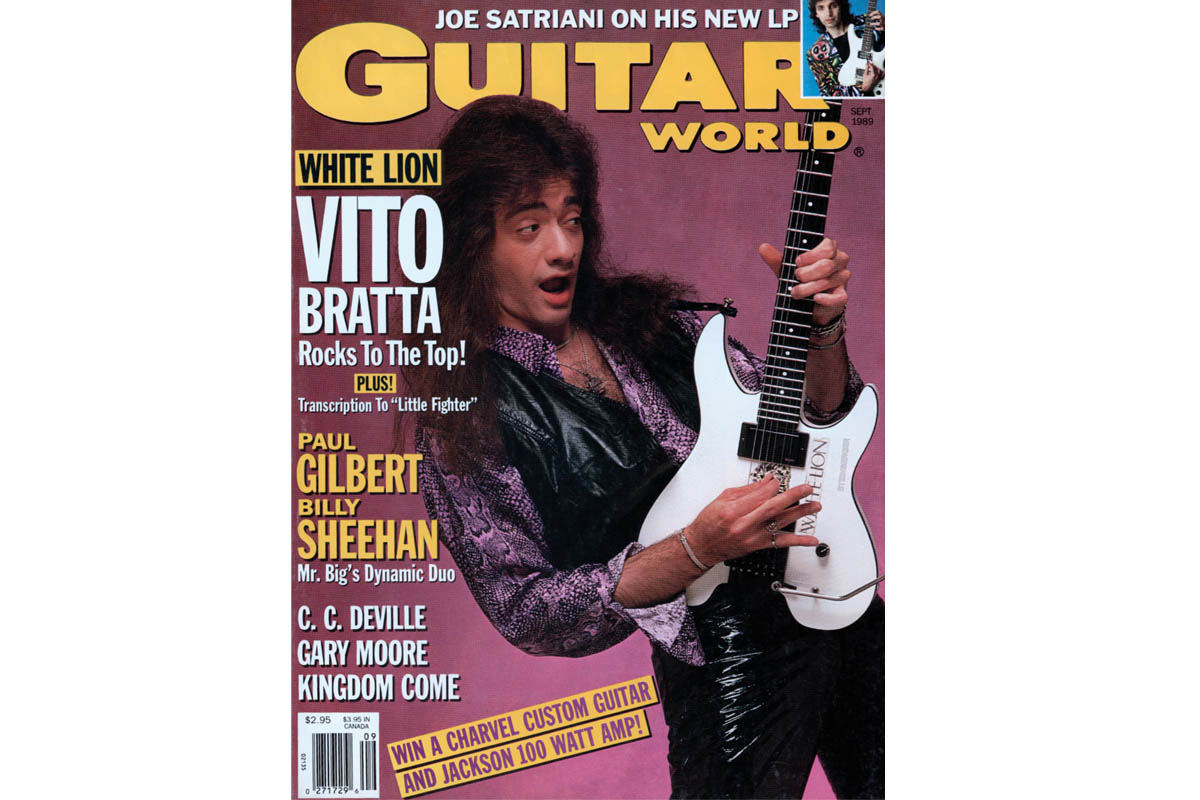
All That Jazz
The feud between Page and Goldwasser reached a boiling point in 1988, and that’s when the real chaos started. After Noe left, the good news was that two talented editors stepped into the breach. The bad news was they were diametric opposites in terms of musical tastes.
Editor-in-chief Joe Bosso liked straight-up rock and roll, but his executive editor, Matt Resnicoff, was a jazz-fusion devotee that worshiped the whiz-bang noodling of players like Scott Henderson and Frank Gambale.
After the June '89 issue, there was no clownin’ around – we became a straight-up rock and roll rag, full of heavy metal thunder and balls-out shredding
While Joe and Matt got along famously as people, the magazine suffered from their schizophrenic taste in music. Guitar World became a very bizarre publication where fans of hair metal bands like Cinderella were also expected to endure features on uber-serious guitarists like Bill Frisell – and vice-versa.
Readers were understandably mystified by the magazine’s mixed signals and started jumping ship like Ritchie Blackmore from a Deep Purple reunion.
As publisher Page commented, “For a time the magazine lost its way. We started including a lot of jazz, which our readers didn’t care about. I knew the key was for us to get younger, not older.”
Rock and Roll All Nite
I also knew the magazine was a confusing mess, but I didn’t really care as long as I was getting assignments and being paid. Then, out of the blue, everything changed.
Resnicoff fled to the now-defunct Musician magazine, and I was asked to take his place. I won’t say Guitar World did a 360 when I arrived… but it did.
One glance at the May and June 1989 issues sums up the story. On one cover, a rather nervous-looking Allan Holdsworth hides timidly behind his Steinberger guitar, and on the next, Zakk Wylde explodes with pure animal fury while the headline screams SPECIAL REPORT! THE YOUNG GUNS OF METAL.
Damn! Like in The Wizard of Oz when Dorothy leaves dreary old Kansas and disembarks in Munchkin Land, GW went from black and white to full-on Technicolor.
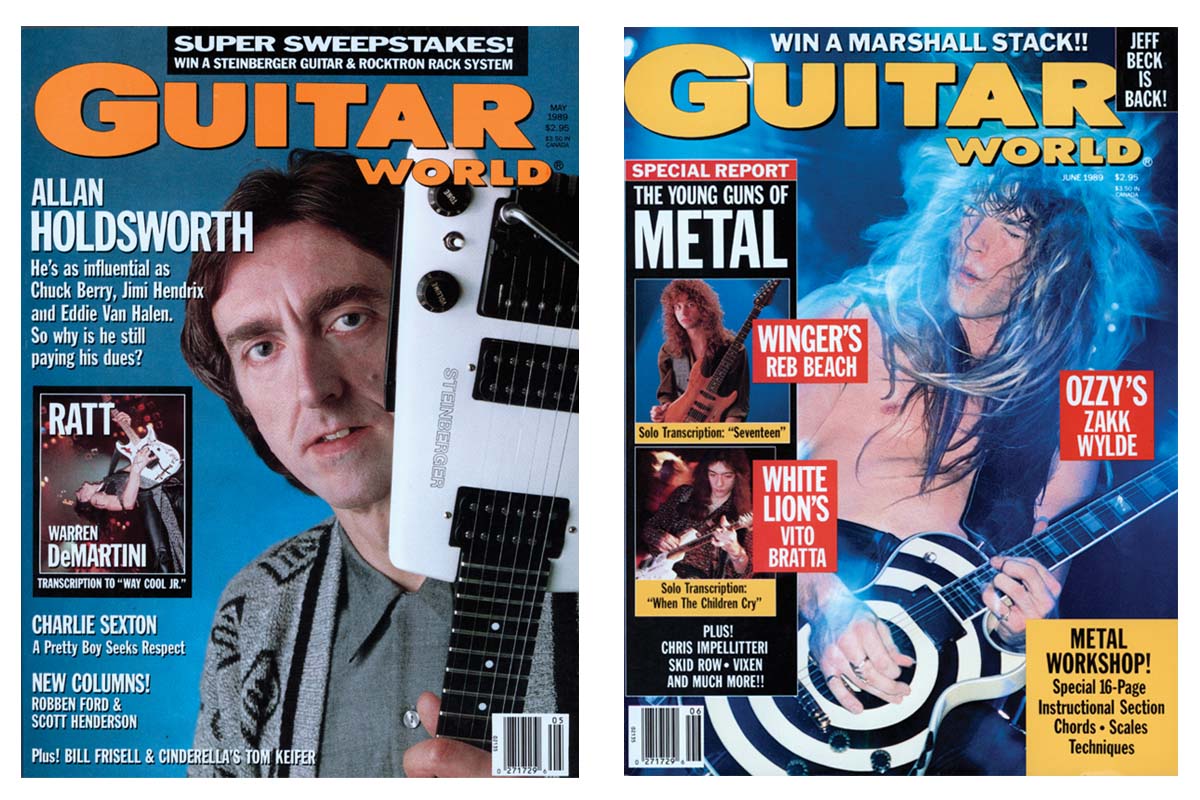
After the June issue, there was no clownin’ around – we became a straight-up rock and roll rag, full of heavy metal thunder and balls-out shredding. And finally, finally, finaaallllly, we became the publication Stanley Harris and Dennis Page dreamed of –a guitar magazine for “rockers with big hair, tight jeans and pointy guitars.”
Now, let me make this clear: I didn’t do it alone, I was more of an enabler… a catalyst, if you will.
Joe Bosso wanted to make the change, and I was more than happy to cheer him on. We both recognized that rock guitar was having a major cultural moment, producing one astounding shredder after another, from Edward Van Halen, Steve Vai and Joe Satriani to new guys like Nuno Bettencourt, Kirk Hammett and Paul Gilbert, and we knew we would be fools if we didn’t cover it.
Besides, guitarists were gobbling that stuff up, and they wanted to learn how to play it, and we saw it as our sworn duty to show them how. And – you know what – we fucking did! And (music swells) it made a lot of people (violins get louder) deliriously happy. (Excuse me a minute… I’m getting a little choked up… okay, okay, whew… now, where was I? Oh yeah…)
In May 1991 Joe Bosso left, taking an A&R position at Polydor Records where he did cool things like sign the great post-hardcore band Quicksand, and later actually wrote an episode of the classic television show, The Sopranos!
Eddie Van Halen let me play his Frankenstrat through his original Marshall in his garage
Amazing. As for me, I was crowned Guitar World’s new editor-in-chief and sat my ass down where it remained for well over two decades – or roughly 320 issues.
Now, don’t expect me to tell what happened over the next 25 years; that would be nuts. However, let me tell you what I was thinking.
Why Guitar World is Cool
After a few years of running GW successfully, people would often say to me, “Why are you staying there? Don’t you want to climb the rock journalism ladder and work at Rolling Stone or something?”
Truth is, I was offered other opportunities, but I absolutely loved Guitar World, and I’ll tell you why. I really couldn’t think of anything better than helping people learn how to play the guitar. In my mind, that was a perfectly legitimate way to spend your life. There is absolutely no bad karma attached to that endeavor.
At Rolling Stone, I would’ve had to write about gossip and people’s lives and worry about publishers yelling at me. Who needed that? I liked playing guitar and hanging out with other musicians. I got to spend hours with Jimmy Page, who let me play his Number One Les Paul and the Harmony acoustic he used on Stairway to Heaven.
Eddie Van Halen let me play his Frankenstrat through his original Marshall in his garage. I also went to Al Hendrix’s house and played on a bunch of Jimi’s guitars… holy shit! I mean, how great was that?
(Actually, if I’m being honest, all of that was a little nerve-racking, because what do you play when Jimmy Page hands you his Stairway to Heaven guitar, or Van Halen offers you his Frankenstrat? Think about it. As much as you want to play the opening to Stairway on the Stairway guitar, or Eruption on the Eruption guitar so you can brag to your buddies later, you can’t do it in front of Jimmy or Eddie. They would think you were a total moron. I could tell you what I played, but I’m not, because then you’d think I’m a moron! See? Nerve-racking.)
I also liked hanging out with the other editors and writers – they were awesome! Tom Beaujour, Jeff Kitts, Chris Gill, Chris Scapelliti, Rich Bienstock, Alan di Perna, Damian Fanelli, Alan Paul, James Rotondi, Paul Riario… the list goes on. Geniuses, one and all. Finally, I loved working at Guitar World because I was good at it. I knew what it should be.
Anybody who has ever spent time in a rock band knows that half of every practice is spent playing and the other half is spent being social, arguing and making stupid jokes. That’s what I wanted GW to feel like. I wanted it to embody the time-honored equation of: Half Playing + Half Goofing Around = 100 Percent Rock and Roll Coolness.
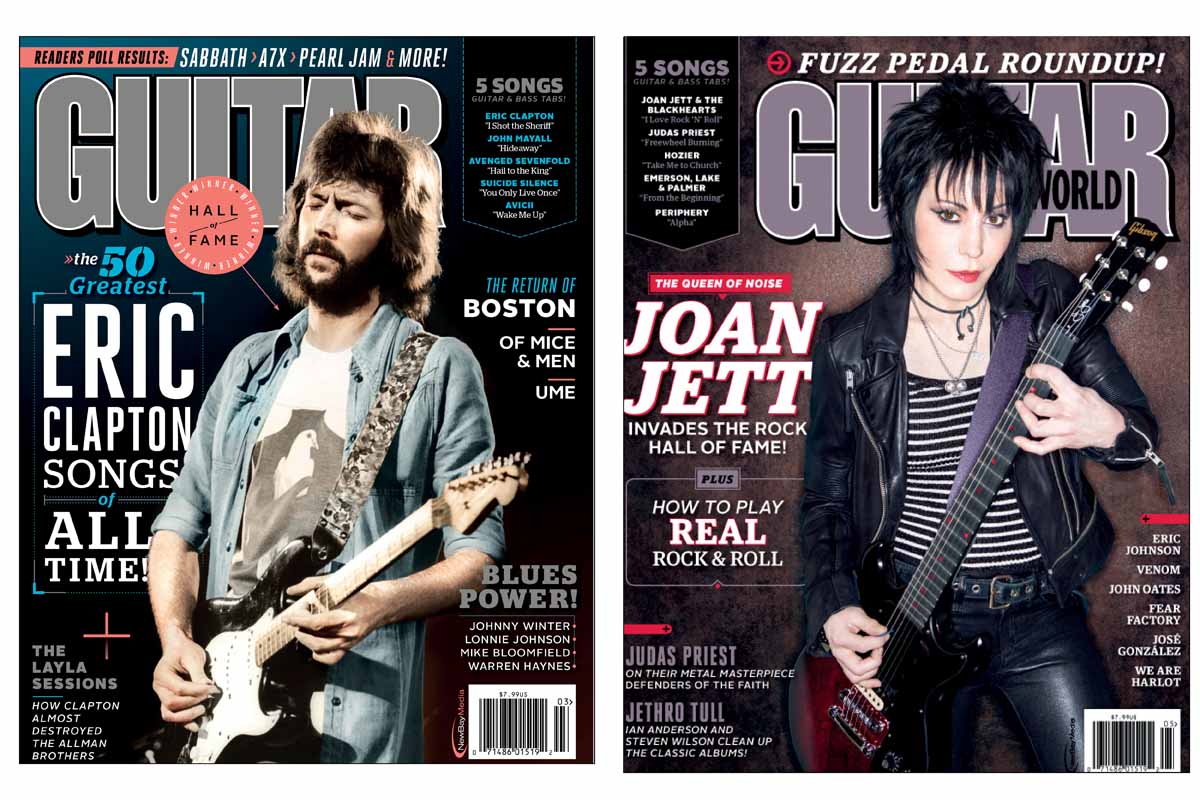
It was very important to offer readers real information on what to buy and how to play, but it was just as important to have a sense of lightness and levity.
But it’s one thing to want to be fun and funny, and it’s another thing to actually be fun and funny, and we had an unlikely secret weapon: our executive editor Harold Steinblatt.
On the outside Harold looked conservative. With his tidy John F. Kennedy haircut, suit jacket and neatly pressed slacks, he exuded professionalism, but inside he was a total loony… mad as a hatter… but brilliant!
Most of our writers in the early Nineties were pretty awful. Either they were pompous blowhards that really didn’t know anything about music or total idiots that handed in copy that was the prose equivalent of broken teeth. Harold’s brilliance was that he could seemingly alter the entire universe by simply moving a comma or injecting an amusing non-sequitur.
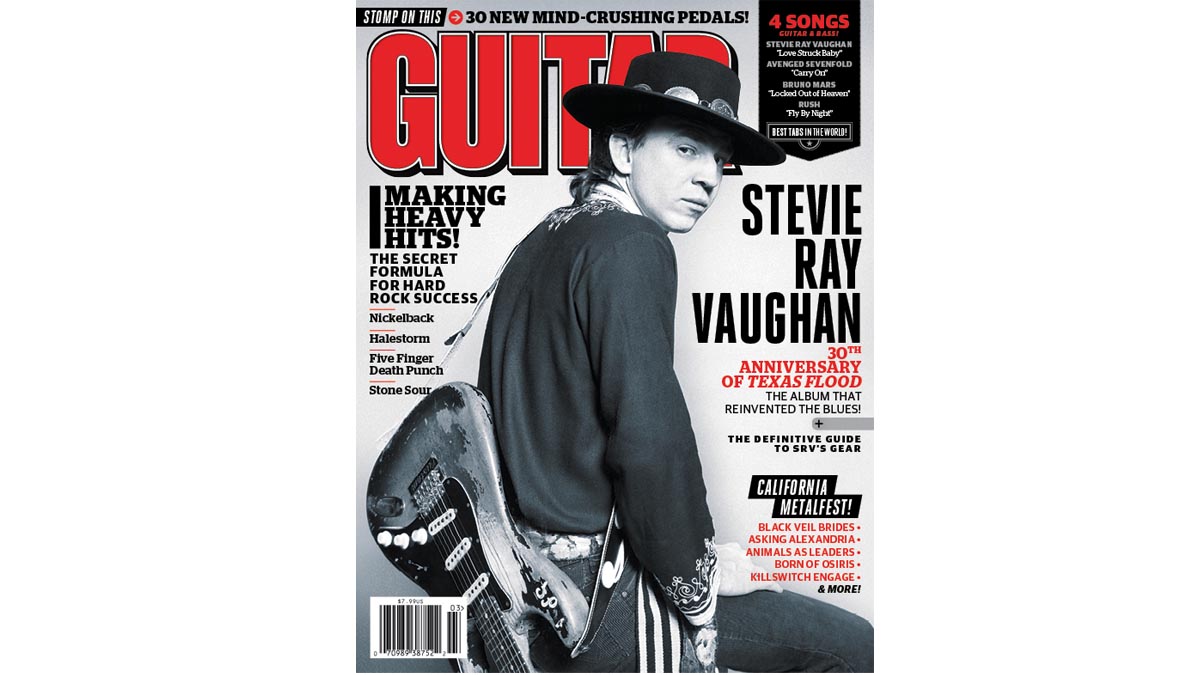
But more often than not, he had to rewrite most pieces from top to bottom, and he always made them smarter, more informative and amusing in the process. If you laughed at Guitar World in the 1990s, it was probably because Harold wanted you to.
Having a sense of humor was important to us, and our readers very quickly got into the act, sending us buckets of profoundly absurd thoughts like: Dear Guitar World: I am a computer systems analyst. I’m in a union with 500 other computer hackers on a national and international level. Our union is seven-million strong, worldwide. If an apology is not given to Yngwie J.
Malmsteen regarding your negative review of his album, Facing the Animal, we will launch a worldwide computer attack on your fail-safe systems, starting with your electricity. You have until April 5 to do this, or face our all-out war against your magazine and company. – Christopher L. Osbourne P.S. Vengeance will be ours!
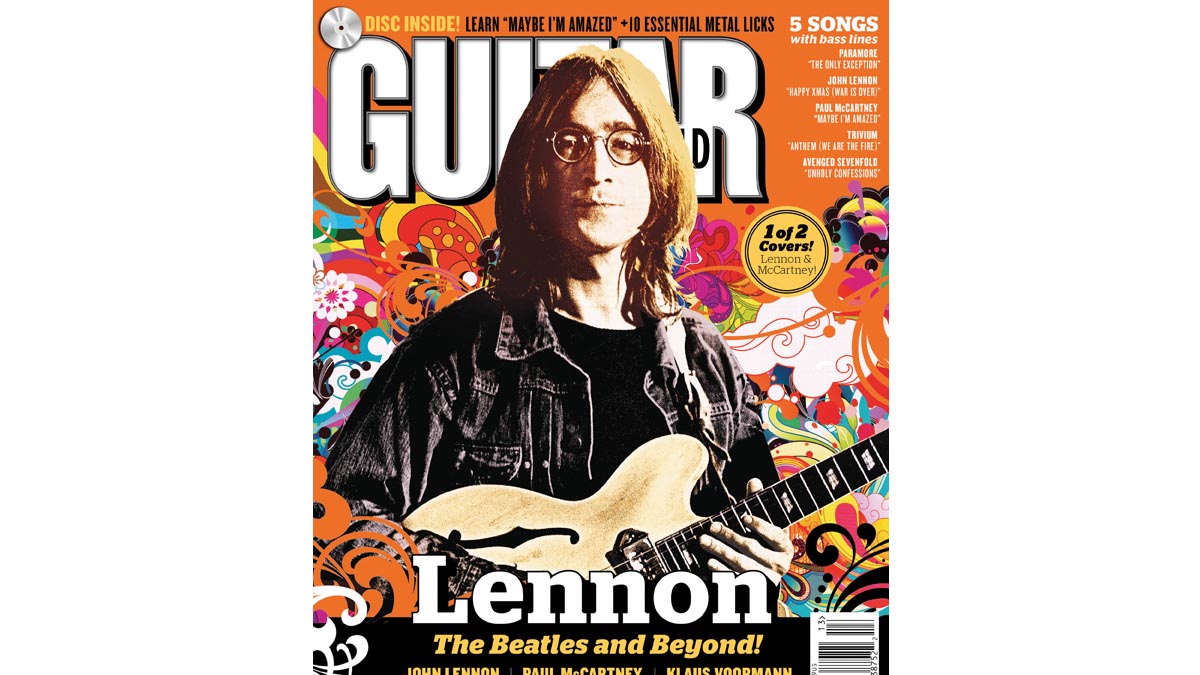
But Guitar World wasn’t all yuks… we could be serious about the guitar, as well. Our music lesson and transcription editors – Jimmy Brown, Andy Aledort, Nick Bowcott, Dave Whitehill, Matt Scharfglass, Jeff Perrin and Wolf Marshall – were literally the best in the world at what they did.
These guys would obsess over every last note and nuance in every transcription and ultimately get even the most complicated Hendrix lick right – and their work still stands head and shoulders above all that crummy stuff you find on the web these days.
And look at just some of the people we had as regular columnists: Kirk Hammett, B.B. King, Steve Vai, Joe Satriani, Trey Anastasio, Angus Young, Buddy Guy, Brian May, Yngwie J. Malmsteen, John Paul Jones, Tony Iommi, Dickey Betts, the dudes from Meshuggah… we were serious, for sure!
Yikes! I’ve only got 300 more words, so let’s get down to business. You’ll get the rest of the story elsewhere in this issue, and I promised some sexy stuff, so let’s do a lightning round!
The Coolest Guitarists
Whenever Guitar World knocked on their door, these guys would always answer: Kirk Hammett, Billy Gibbons, Steve Vai, Slash, Joe Perry, Alex Skolnick, Joe Satriani, Dimebag Darrell and Zakk Wylde*. (*Zakk gets an asterisk because one drunken evening out he threatened to murder me by putting me in a woodchipper. But other than that, he was great!)

Who were your best interviews?
Jimmy Page and Eric Clapton for different reasons. Page had an extraordinary memory and his answers regarding Led Zeppelin and the Yardbirds were almost always remarkably detailed.
On the other hand, when he didn’t want to answer something, he would just shut me down by saying, “I’m not going to answer that,” which was always a little awkward. Our interviews were often very intense, but the end result was always terrific.
Clapton, on the other hand, was very warm and emotionally engaged. Given his legendary status, it surprised me he was so open. (However, I might’ve liked him because at one point we were talking about Bob Dylan, and I expressed an interest in speaking with him. Clapton then said, “Oh, Bob would talk to you… you’re cool!” I was like, wait, did Eric Clapton say I’m “cool”?)
Let’s also toss Edward Van Halen into this mix. Ed was genuinely articulate and almost always had an entertaining answer for anything I wanted to ask. Bless you, Ed!
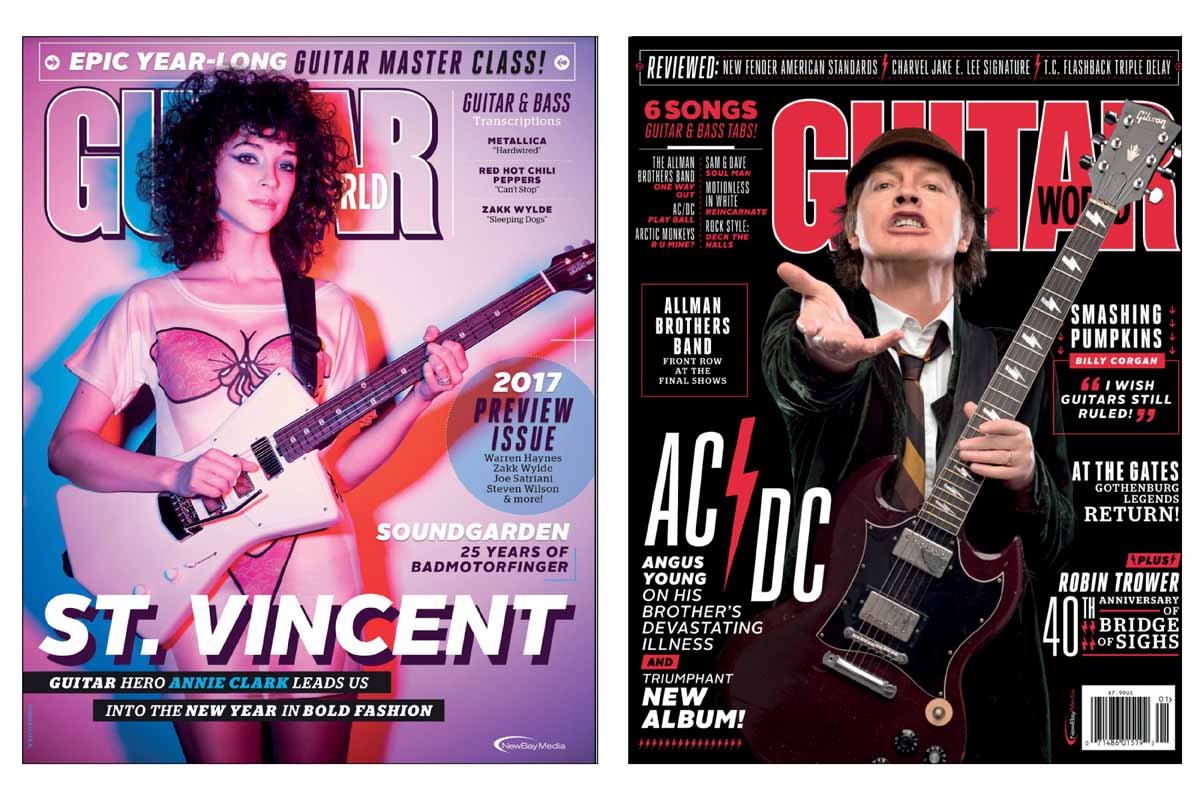
The best moment at Guitar World…
Receiving a call from Arlington, Texas, from one of our writers telling me in a shaky voice that he and Pantera guitarist Dimebag Darrell had taken a “shortcut” over several neighborhood front lawns in a GW rental car and “accidently” ran over a fully decorated Christmas tree.
The worst moment at Guitar World…
Receiving a call from Arlington, Texas, from one of our writers informing me of the senseless murder of Pantera guitarist Dimebag Darrell by a deranged fan. It was always tragic when we lost a great guitarist like Stevie Ray Vaughan, George Harrison or Randy Rhoads, but Dime was a longtime friend and part of the Guitar World family. He did a column for us for several years and he visited our offices often. We were devastated.
The story that got away…
Nirvana was in New York City to perform on Saturday Night Live and we pitched the idea to their publicist to take Kurt Cobain to a used guitar shop, give him $250, and see what he would buy.
Kurt actually liked Guitar World and thought the idea was funny and agreed to do it. Unfortunately, he reportedly OD’d the day before, and was in no condition to do much of anything and cancelled.
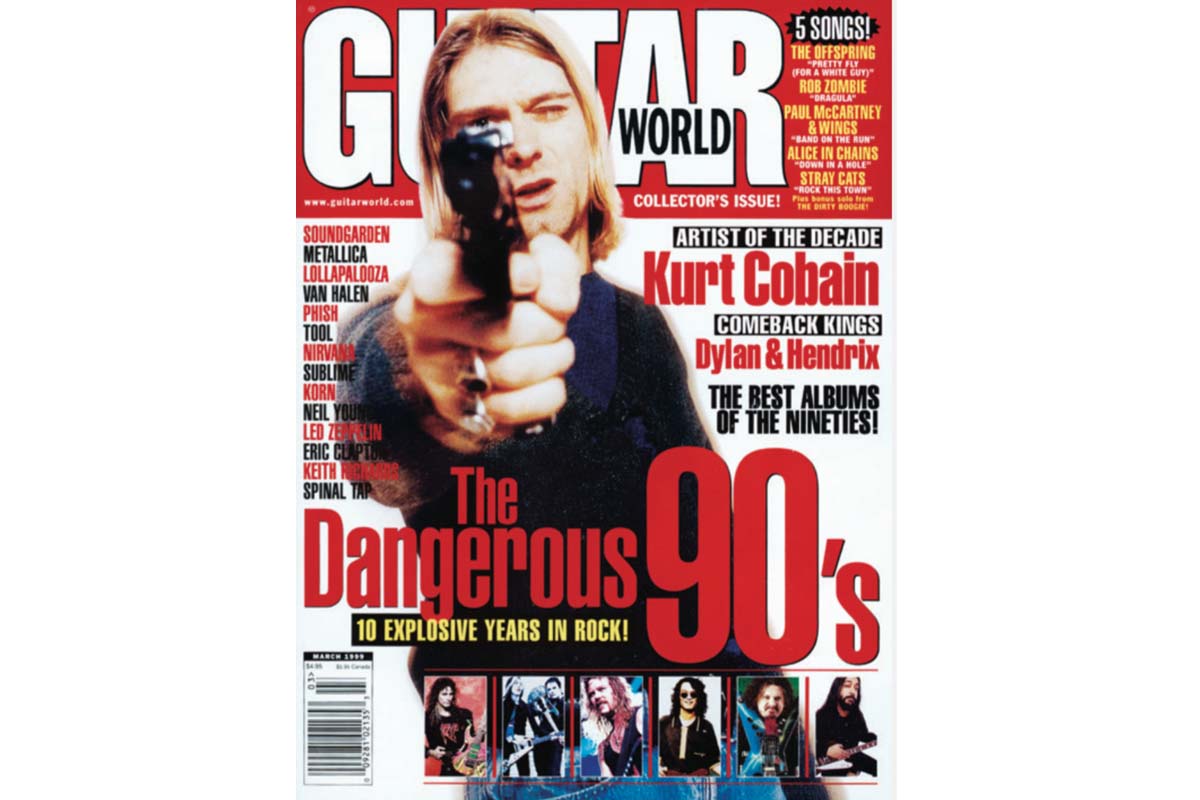
Well, that's it. I’m almost out of my allotted words. To wrap things up, while I was editor of Guitar World, the magazine was sold and bought a couple times.
One of the previous owners decided to fire me a few years ago because they claimed they wanted to take the magazine in “a different direction”. (Truth is, they didn’t change a damn thing. I was making too much money for their tastes and they just tossed me out. Corporations… you gotta love ’em!)
Since then, my replacements, Jeff Kitts and current editor Damian Fanelli have acquitted themselves quite nicely. I barely covered anything, but I think I said most of what I had to say, except this: After 40 years Guitar World abides… and, you know, I take comfort in that.
It’s good knowing it’s still out there. And It’s been a pretty good story so far, don’t you think? It made me laugh to beat the band. Parts anyway. I didn’t like seein’ Dimebag go… Look at me, I’m ramblin’ again. Well, I hope you folks enjoyed reading this. Catch you later on down the trail.
A long time ago in a galaxy far, far away Brad was the editor of Guitar World from 1990 to 2015. Since his departure he has authored Eruption: Conversations with Eddie Van Halen, Light & Shade: Conversations with Jimmy Page and Play it Loud: An Epic History of the Style, Sound & Revolution of the Electric Guitar, which was the inspiration for the Play It Loud exhibition at the Metropolitan Museum of Art in New York City in 2019.
